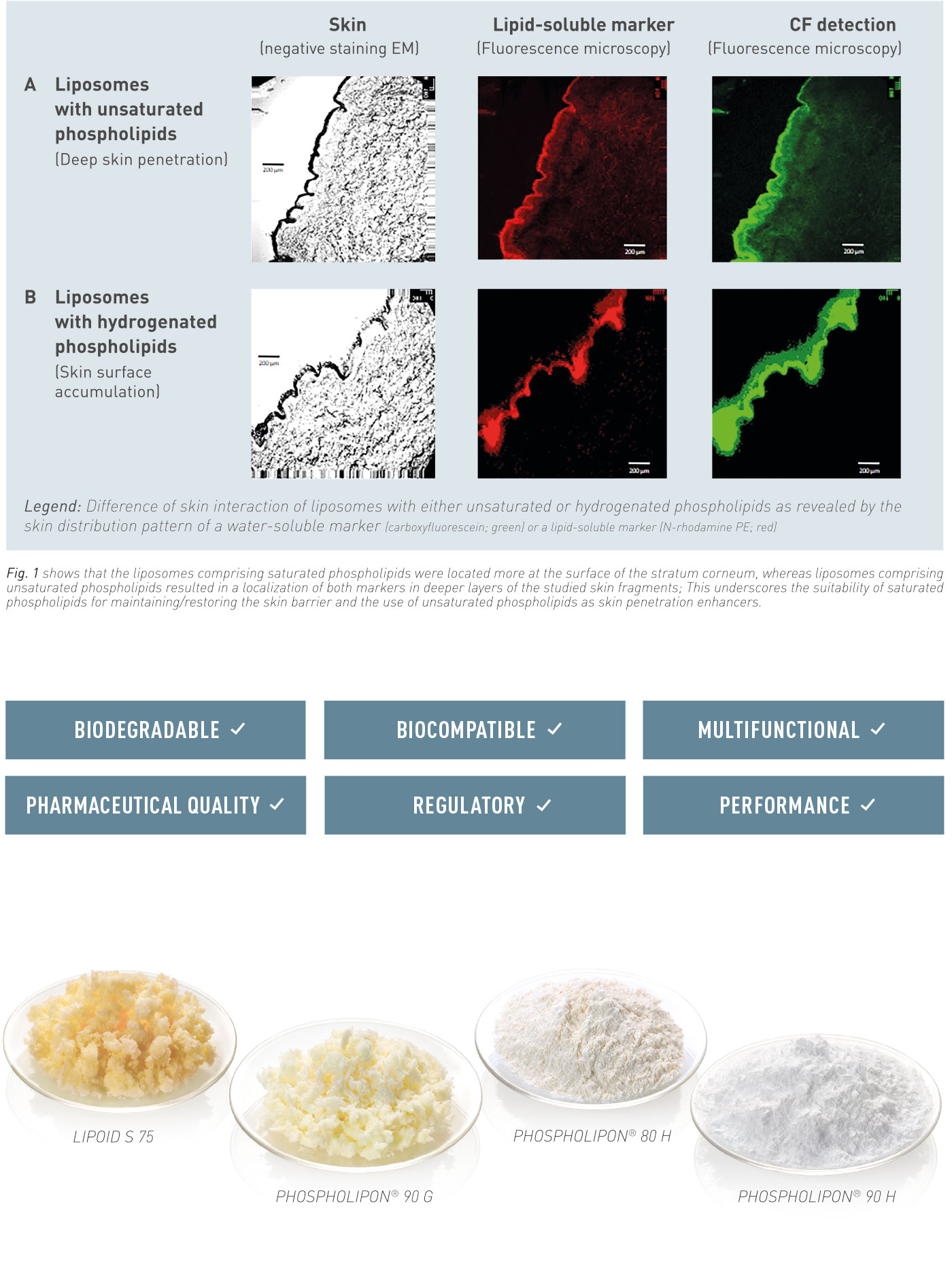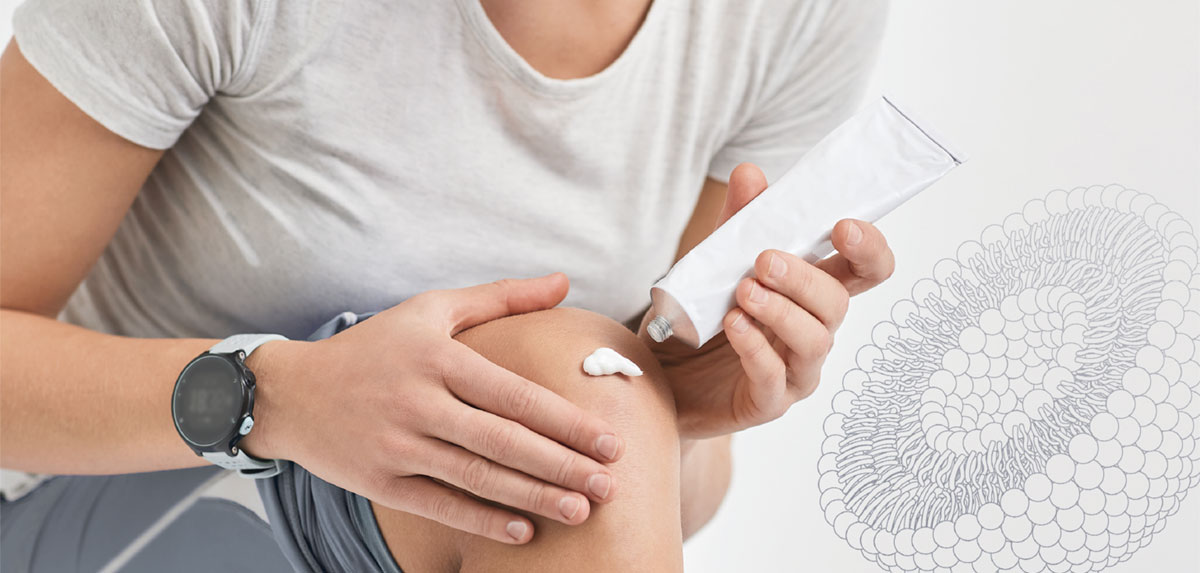Phospholipids are the excipients of choice in dermal formulations to modulate the interaction of active pharmaceutical ingredients (APIs) with the skin.
Phospholipids have unique multifunctional properties. They are natural components of every human cell. Therefore they are highly biocompatible and well tolerated – even by sensitive skin. The external application of phospholipids makes it possible to influence the degree of skin interaction: On using natural unsaturated phospholipids fluidization of the stratum corneum allows the penetration of APIs into deeper skin layers, while use of saturated (hydrogenated) phospholipids will restore/improve the barrier function of the skin in order to keep APIs in place longer [1].
In addition, they can replace missing or attenuated substances in the stressed skin (e.g. linoleic acid) via instrinsic metabolic pathways in the skin. Besides their use as penetration enhancer or retention time prolonger, phospholipids can also act as emulsifiers, natural moisturizers, texturizers or emollients, highlighting their role as multifunctional excipients contributing multiple benefits to dermal formulations [2].

Two classes of phospholipids (saturated phospholipids and unsaturated phospholipids) and three classes of phospholipid-based delivery systems (liposomes, emulsions, and lamellar structures) are commonly used in dermal pharmaceutical products. Saturated (hydrogenated) phospholipids have a phase transition temperature above the skin temperature and therefore form rigid structures that enhance the skin retention time of actives, while natural unsaturated phospholipids have a phase transition temperature below the skin temperature, enabling the formation of more flexible carrier systems with increased skin interaction, resulting in deeper tissue penetration of active ingredients [3].
In addition to being used to functionally improve dermal drug products, phospholipids can also be considered to make pharmaceutical form line extensions, by replacing other functional excipients [4,5,6].
